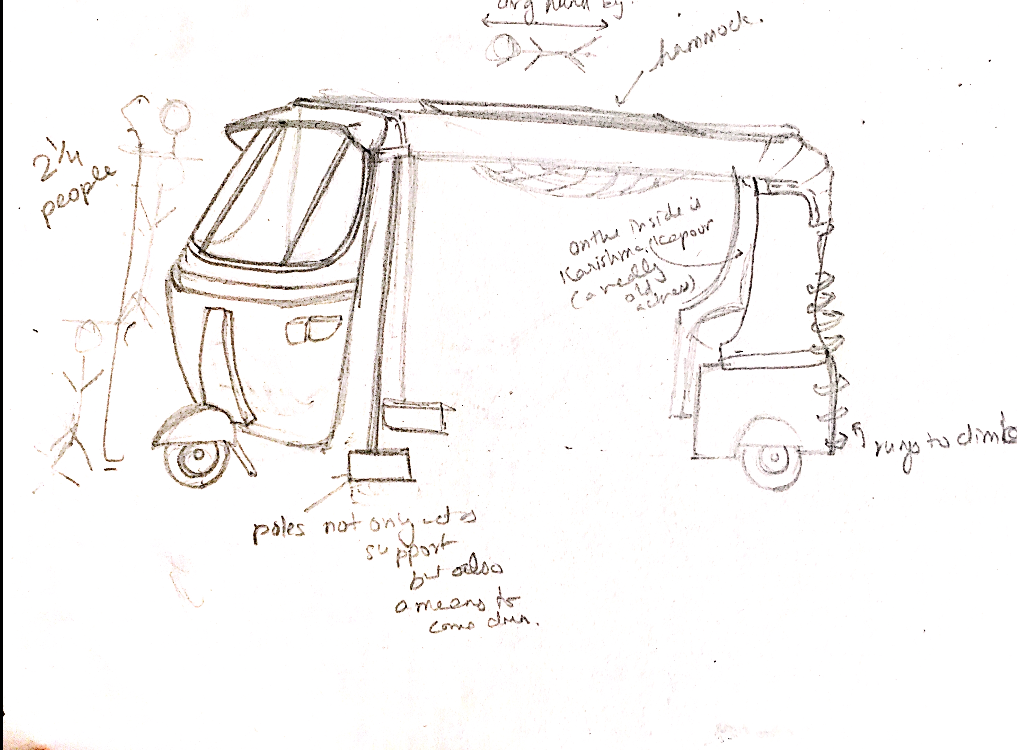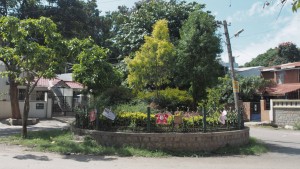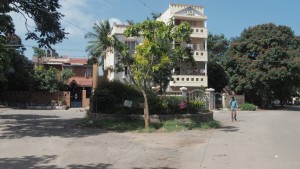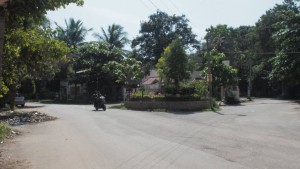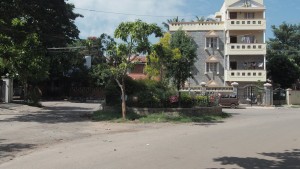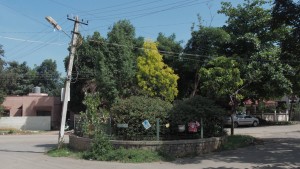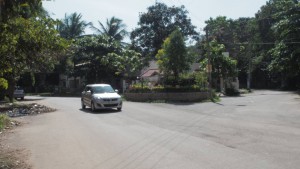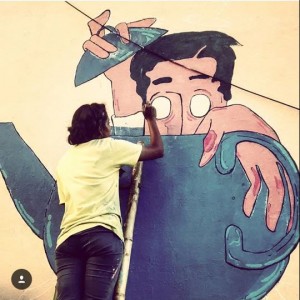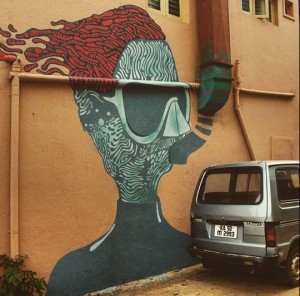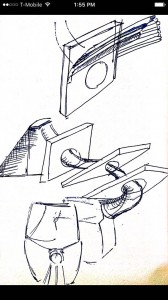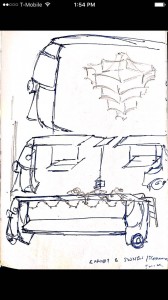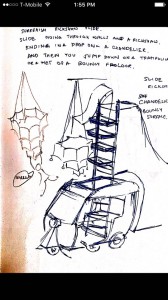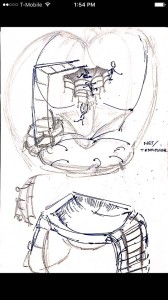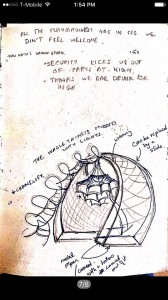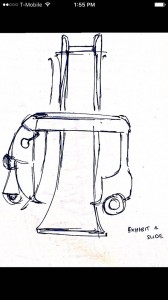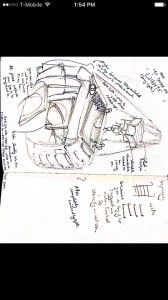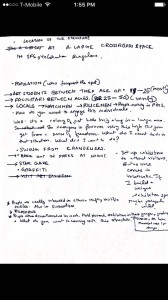Final Project
Location:
Empty vast crossroads space in SFS colony, Yelahanka, Bangalore, India. SFS is a colony of bungalows rented each year to art students. It was initially built several years ago for families of martyrs, and government officials, but now a large section of it has been bought by PG owners who rent the houses out to students.The roads here are wide. The tallest buildings here are four storeys high. And every house or building is a different bright colours. All signs are written in Kannada, and misspelled English.The locals who live around the colony are extremely orthodox and conservative, and hence as a result of cultural differences, some amount of conflict exists between the students and the locals. The students come here from all over India, and almost none of them speak the local language
(Kannada), but manage to get by because they know English and Hindi. However this place maintains a very strong ethnic, old world charm. The first things I think of when I think ofYelahanka, are giant trees with spreading roots and canopies that shelter the wide roads, the haggling rickshawala, and the colourful skies, with clouds so low, that they seem to brush the rooftops. SFS colony is a very tightly knit community of individuals. It has a mad energy of its own, with its occupants constantly churning out art.
Population frequenting this space:
• Art Students( Ages: 18-25 years)
• Art school Facilitators/lnstructors(Ages: 25-50 years)
• Very few Locals
• Watchmen
• Policemen
• People running and working in Paying Guest accomodations
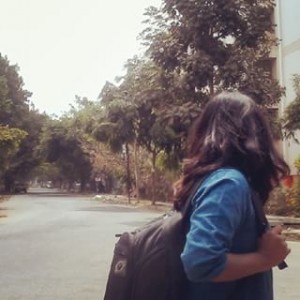
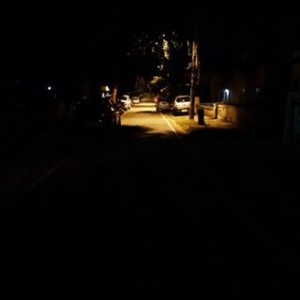
This particular crossroads is a place frequented by people who want to get to college, the cafeteria, the local kindergarten, the garage that doubles as the table tennis room, the various parks, the New Town market( the closest markets where you can buy groceries, hardware supplies, paint, plumbing fixtures, sweets), the New Town bus stop, and cheap diners that serve unhealthy street food. It is also an area occupied by countless stray dogs, who are cared for by the students who live there. The absence of tall buildings makes the space look bigger than it is.
Trends:
Students here study textile design, animation, illustration, product design, visual communication, exhibition design. Since they live in a village, materials like specific sizes, thicknesses etc, of plastic, metal, resin, certain colours and materials of cloth, paper, are not easily available.Hence they forage and scavenge for materials for their projects in scrapyards, in the closest town, and the city. Hence a culture of constant recycle of material has been generated. This extends even to the way people dress, recycling skirts as tops, and other accessories. Being surrounded by the culture and motifs of a rural village in South India, a lot their work, involves ethnic imagery. There is a distinct preoccupation with concepts of ethnicity, surrealism, and the idea of what it means to be ethnic or modem and if the two can be perceived as the same in today’s society.
Motifs you see in the environment:
- Masks of monsters and demons hung outside doors to ward off evil gazes and spirit.
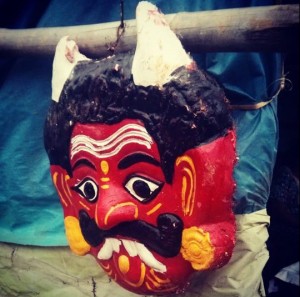
- • Stray cows and bulls
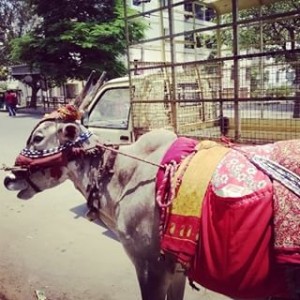
• temples
• Misspelled signs outside shops. (snacks becomes snakes, sandwich becomes sendwitch, etc). Also, all these signs, don’t just label the places they stand before, but also describe them. So a small paper card next to a plate of” chicken kebabs”, will read” tangdi kabab mouthwater tasety”. (which means the kebabs made from chicken thighs, are so tasty that they will make you salivate, at sight.”)

• Colourful clothes drying from windowsills, or hanging from lines that hang in balconies of colourful houses.
• Autorickshaws, the rickshawalas who drive them, and the owners of grocery stores. These people become motifs because we interact with them everyday on a daily basis. Rickshaw prices are not fixed. Haggling and sweet talking the rickshawalas while referring to them as “Brother”, and “Uncle” in order to get them to charge you fairly, is an art, that everyone learns from a very young age. Also everyone’s perception of the “fair rickshaw fare” differs, based on which part oflndia you are from. For instance, fair fare for rickshaws in Y elahanka is 40 Rupees, for a distance that costs me 17 Rupees in Mumbai.
• Bumper sticker culture does not exist here, but people decorate their trucks and rickshaws with originality, and individuality, by painting over them and making them wear, colourful accessories and tassels, similar to the ones that cows and bulls are adorned with during harvest festivals. Slogans, ideals, beliefs, and names of loved ones are often painted in calligraphic script over rickshawallah, trucks, and even on the walls outside local shops by the owners. Common phrase you see on rickshaws and trucks are:”Jannat ki sawaari”( the ride of heaven), and “Dekh magar pyaar se”( Look but with love), These phrases, in that characteristic script, are as old as time, and people often get them tattooed on their bodies .. Other than painting motifs of wheat crops, swans the Indian flag, the tiger, the lotus, and patterns, and the text, people also decorate their rickshaws and shops with pictures of actors and actresses, from a times, that nobody my age remembers, or will admit to remembering.
• children playing badminton or hopscotch on the streets.
• men in ‘lungis’
• bicycles
• palimpsests
• small independent grocery stores
• carts selling street food
• hand carts selling coconuts
• students
• graffiti
A brief note about auto rickshaws:
A rickshaw is an extremely common mode of transport, all over the country. In a place like Yelahanka, students come from all over the country, and often cannot relate to each other in terms of food choices, life experiences, language, culture,even opinions. But everyone everywhere is united about their feelings about rickshaws, and everyone has their own crazy rickshaw ride stories. I have personally spent a ridiculous amount of my life inside a rickshaw and talking to autowallahs. Rickshaws have become a relatable nation wide motif. And from the way it has been adopted by multinational companies, in advertisements of their products in India, I am not the only one.
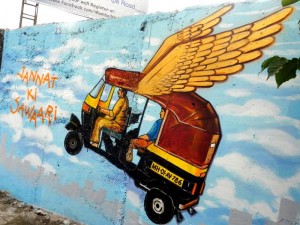
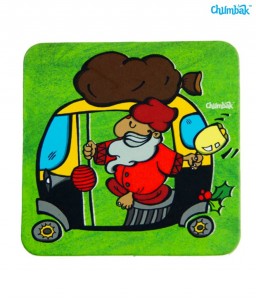
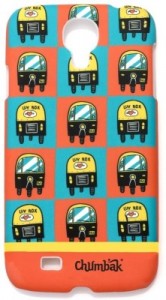
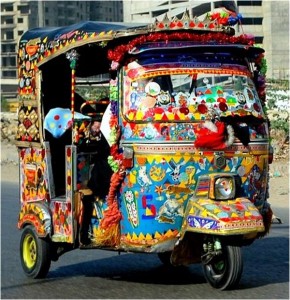
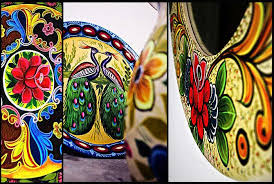
What I think this space needs:
- More Functional streetlights, eyes and people in this space will make the area safe. There is actually a lane that leads away from the crossroads, that has been named rapist lane, because of all the crime that takes place there.
- • Students need a place where they can congregate, without being shooed away by the police. The police in the area, like the locals, harbour a strong dislike for the students, who they find “vulgar”, owing to their clothes, and the fact that they don’t know Kannada, and other lifestyle choices.
• Students always need more and more walls to paint for classes that involve mural art, and have to beg the locals and PG owners for permission to paint on the walls of their houses, and have to negotiate their subjects. Also, there is so much pressure, about making sure you don’t mess up anyone’s house. They need a space where they can test their skills. A space to host exhibitions of their personal projects, that they make outside school, that they currently host on terraces and in garages.
Process
Form for the structure:
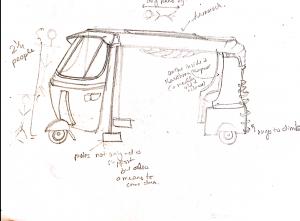
When not in use as an exhibition space, this space can be used as an outdoor studio. One of the best things about Bangalore is its perfect weather all year round. I remember always wishing I had an outdoor studio to work in when I lived there. Besides I think a structure like this in the midst of art students, has the potential to develop many more uses and functions with time and use.
